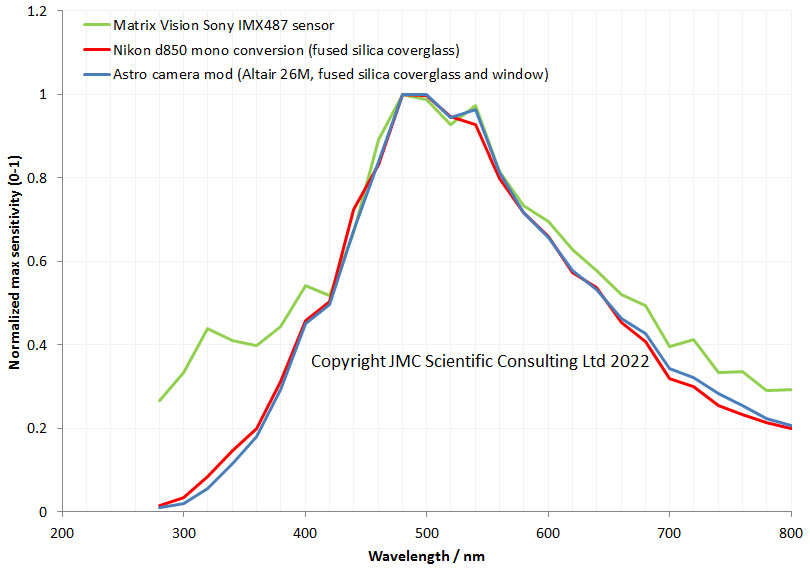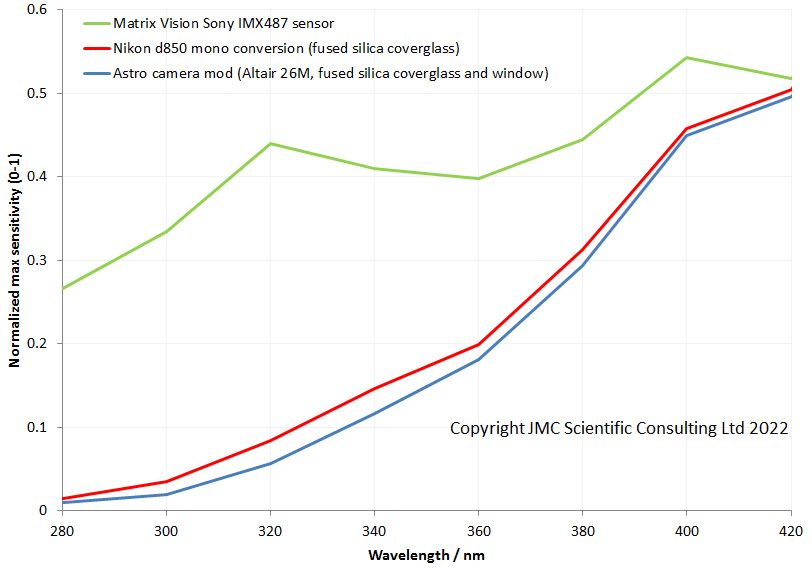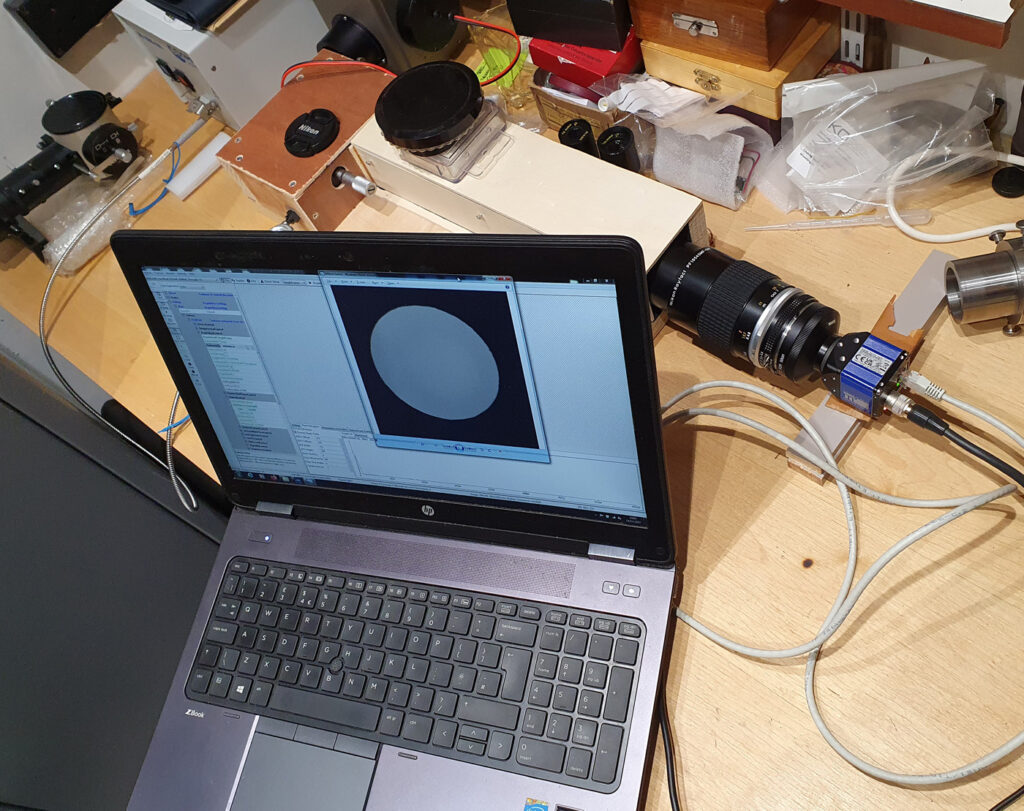Having received a Matrix Vision BlueCougar camera with a UV sensitive Sony IMX487 sensor (which I reported here) one of the first jobs is to understand just how sensitive it is, especially in the UV. To do this I ran it through a test with my spectral sensitivity measurement system (see here for details on that build). As comparisons I used two different cameras – a monochrome converted Nikon d850 with the Bayer filter and microlens array removed, and an astro camera (Altair 26M) which still has microlenses. Both of these have fused silica coverglasses and are optimized for my UV work. I normalized the output from each camera to the max value to more easily compare them, and here is what the comparison looks like.

And a more close up view of the UV region.

Here’s an image of the testing setup, on a suitably disorganized work bench.

Having seen a few different QE curves for this sensor, I wasn’t sure what to expect. This was why I needed to do the measurement myself, to allow for comparison with other meaningful cameras, and as of today (14th Dec 2022) as far as I am aware this is the only such comparison available. The Matrix Vision software for the camera was great for this test, as it allowed me to get the histogram data directly, without saving the files and then analyzing later, which saved me loads of time. Also I used binning to improve the overall sensitivity of the camera. As I am slightly limited by max exposure time (I used 5s for the Matrix Vision camera, vs 30s for the Nikon d850 and up to 4 mins for the astro camera) I did a 4×4 binning which reduced file size but drastically reduced the need to long acquisition times. This was kept the same for all wavelengths, so doesn’t change the shape of the curve and still allows for comparisons with other cameras.
After all that testing, what to make of this? I’m actually pretty amazed by how sensitive this camera is in the UV, especially below 350nm where it is dropping only very slowly. In fact for my microscopy at 313nm and 365nm, the sensitivity at these wavelengths is almost the same, while with my other cameras at 365nm they are about 4x as sensitive as they are at 313nm. This will make imaging at short wavelengths simpler, especially when combined with the live view capability of the Matrix Vision camera. While I cannot measure below 280nm with my setup, the sensor is supposed to offer good sensitivity down to 200nm, only dropping slightly between 300nm and 200nm, and this is where it really should shine when compared with the others. The only way I can test that though is to get it on the microscope and see how it behaves, and that is for another day. Sony have been pretty cagey about how they have made this UV sensitive. I have my suspicions, but more testing needed on that.
As always, thanks for reading, and if you’d like to know more about this or any other aspect of my work, I can be reached here.
